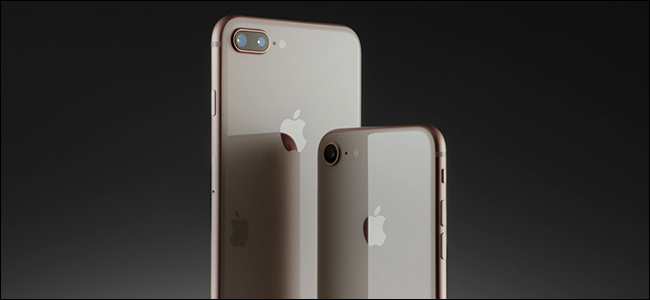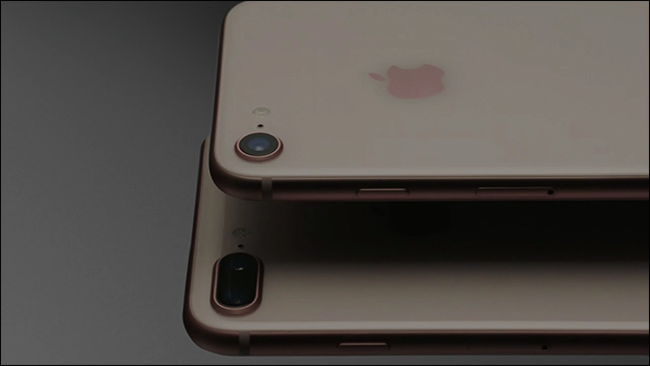Quick Links
Another year, another new iPhone, and it's time to wade through the mess of confusing financing plans, early upgrades, and pay-to-own schemes. All the different prices, plans, and carriers supporting the iPhone are enough to make our heads spin, so we're here to help you decide whether it's better to lease or own.
The Different Purchasing Options from Every US Carrier
Way back in the days of 2013, it used to be that if you wanted an iPhone, you'd have to pay a certain amount upfront (anywhere from $0 to $299, model dependent), sign a two-year contract, and then your carrier would make up the cost down the line by tacking on charges like an "iPhone-specific data plan", or extra insurance.
Now, things are a bit different, and thankfully, more cost effective. If you're still grandfathered in to a contract, you may be able to keep it, but there's very little reason to do so (unless maybe you have an unlimited data plan you actually use). Instead, most carriers offer two main options. You can:
- Buy the phone outright and own it. This will cost you $699 for the base model iPhone 8, and more for higher storage models or the Plus version.
- Pay for the phone over time. For the base model iPhone 8, this will cost anywhere between $20 and $35 per month. On most carriers, this acts as a sort of hybrid between leasing and financing---you lease your phone with an option to own at the end of your term. You can either make all your payments (usually 24 months) and own your phone, or trade in your phone after a shorter period (like 12 or 18 months) and upgrade to the newest model instead.
If you cancel your wireless service before paying the phone off, you'll usually have to pay the remaining balance on your payment plan to finish buying your phone. In addition, many carriers will offer you a few hundred dollars in credit if you trade in your own phone, so the final cost will depend on your specific situation.
Each carrier has their own specific fine print, so let's go over the leasing and early upgrade options for each. Then, we'll discuss what the best way to buy your phone is.
Verizon
Verizon's financing plan is fairly simple: you pay a set amount every month (which will be $29.16 per month for the base level iPhone), for 24 months. At the end of 24 months, you own the device and can do with it as you wish.
Alternatively, you can trade the phone in after 12 months and upgrade to another phone, continuing to pay whatever that phone costs per month.
Or, if neither of those are your speed, you can buy the phone outright ($699 for the base model).
AT&T
AT&T probably has the most complex setup of the bunch. They have two separate financing plans, depending on how much you want to pay per month and how often you're able to upgrade early, if you so desire.
The "AT&T Next" plan is $23.34 per month for the base model iPhone, and you pay that for 30 months. At that point, you own your device. Alternatively, you can trade it in and upgrade your phone once 80% of it is paid off (so, 24 months). Then you'll pay the monthly cost for the next phone going forward.
If you want to upgrade more often, the "AT&T Next Every Year" plan is a bit more expensive---$29.16 per month for the base model iPhone---but it only lasts 24 months before you are done making payments and own the phone. In addition, you can trade it in and upgrade once the device is 50% paid off (after 12 months---hence the "Every Year" moinker).
And, as usual, you can buy your phone outright for $699 if these options don't appeal to you.
T-Mobile
T-Mobile's financing program is straightforward: You pay $29.16 per month (for the base iPhone) for 24 months, after which you own the phone. Done deal.
Their early upgrade plan is completely separate, and it is...more confusing. If you want to get in on the early upgrade train, you can upgrade to some flagship and "cheap" phones any time, at most once a month. For phones not on that list, you'll have to pay $9 to $15 extra per month for a JUMP! plan that includes additional insurance on your phone (in case you break it), as well as the ability to trade in and upgrade your phone once you've paid off 50% of it. You can compare the different JUMP plans here.
Alternatively, you can pay for your phone outright at the beginning---it'll be $699 for the same base iPhone mentioned above.
Sprint
Sprint's financing plan is just a tad different. You pay your phone off monthly, as usual---$29.17 per month for the base iPhone. That lasts for 18 months, after which you can pay the remaining balance---which would be about $174.93 for the $699 base iPhone model---and own your phone.
Alternatively, you can trade your phone in and upgrade it after only 12 months of that payment plan.
And, of course, you can buy your phone outright for the full $699 (or whatever your model iPhone costs).
Apple
You don't have to buy your phone from a carrier, of course. You can buy it directly from Apple, and even Apple has similar financing/early upgrade plans.
Apple's program costs $34.50 per month for the same base iPhone we've been discussing above, and lasts 24 months. Why does it cost more than the others? Well, Apple's plan includes AppleCare+. This insurance is handy, but it's unfortunate that they don't offer a financing option that doesn't include this extra cost. You have to get AppleCare+ if you want to finance your phone.
If you want to upgrade early, Apple lets you do so after 12 payments. Or, you can buy your phone outright for the $699.
So Should You Lease Your Phone, or Buy It Outright?
All of the above is information you can find on the carrier's web sites---you're here to answer the real question. Which option is the best deal?
The answer is pretty simple: It is always better to buy your phone outright...as long as you sell it when you're done with it.
iPhones keep their value very well over time, which means if you sell your phone before upgrading, you can get a fair amount of money back---usually between $450 and $500 for that base model in good condition (that reflects the old $650 base model, not the new $699 base model, but bear with me). That means, if you upgrade to the latest base model iPhone every 12 months and sell your old one on a site like Swappa, you'll have paid an average of $175 for that phone.
With the early upgrade plans, you're forced to trade in your phone every time you upgrade. But after 12 months, you'll have already paid a whopping $325 to the carrier ($27.09 per month x 12 months, for that old $650 base model, just to compare apples and oranges---the values will be a little higher for the new $699 model, but we don't have one-year used prices for them yet).
In short: you pay almost twice as much when you lease your phone. That...is a terrible deal.
Instead, if you buy your phone outright and sell it when you're done, you're literally saving over a hundred dollars per year. For the small hassle of taking pictures of your phone and driving to the post office. If you know you're going to be too lazy to do this, feel free to lease and upgrade early---just know you're paying about twice as much to do so.
If you plan on keeping your phone for more than two years, then I suppose you could finance-to-own, and pay off your phone in full over the 24 months. But if you change your mind and want to upgrade, not all carriers will let you pay off the rest of your phone at once to own it---so be careful and read the fine print if you go this route.







